From fixing crankshafts on the road to conquering cycling, the history of Colnago
Ernesto Colnago, living legend of cycling, turns 93 today, February 9th. Nearly 70 of those years leading his company. Throughout those decades, the eyes of this true patriarch of bike manufacturers have seen absolutely everything pass by. In his memory, images are preserved from the times of Coppi, Bartali, and Bahamontes to the Tours of Pogacar, won aboard one of his latest models. He was a mechanic for Magni, built frames for Eddy Merckx, led Tony Rominger and Óscar Freire to victory... and even crossed the Iron Curtain to work with the USSR. A fascinating adventure of innovation and continuous improvement that deserves to be known. This is the story of Colnago, 'the brand of the Cannibal'.
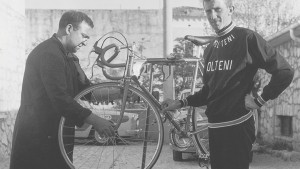
Colnago's origins: Magni's cranks
For those of us who grew up watching road cycling in the 90s (that very Italian cycling where almost half of the professional teams were transalpine, the components were all Campagnolo, and most jerseys were from Santini, Nalini, and Castelli), there were almost only two bike brands: Pinarello's Miguel Indurain and Colnago's Tony Rominger, Abraham Olano, Museeuw, and company in the Clas and the subsequent Mapei (okay, add Bugno's Bianchi and Gewiss and the flashy Look from ONCE). It was another mythical duel of the time, on par with Subaru Impreza vs Mitsubishi Lancer Evo in rallies, or Honda vs Yamaha in motorcycling.
What we didn't know back then was that the brand with a clover ace as its emblem had a rich history dating back to the mythical times of Italian cycling, those of the post-war era and the Coppi-Bartali rivalry. It is rarely remembered that, in that duel, there was a third guest: Fiorenzo Magni, who 'stole' the Giro d'Italia from them up to 3 times, in 1948, 1951, and 1955.
RECOMENDADO
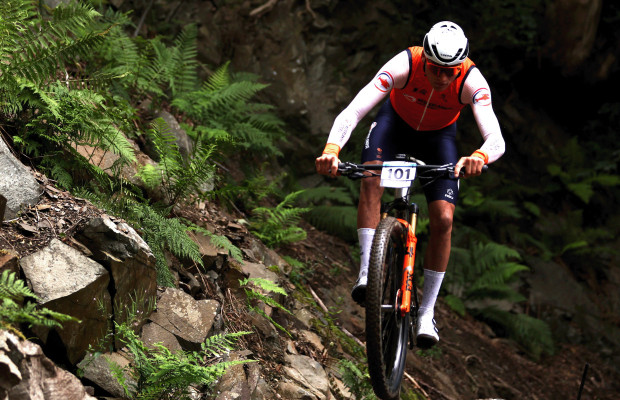
Some reasons to stay away from the road in winter
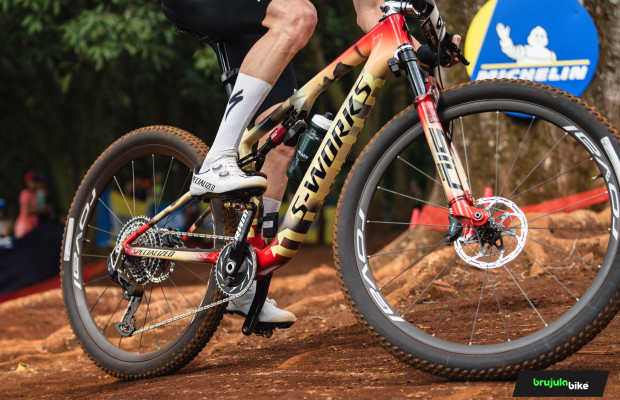
S-Works: what does it really mean and where does Specialized's most exclusive label come from?
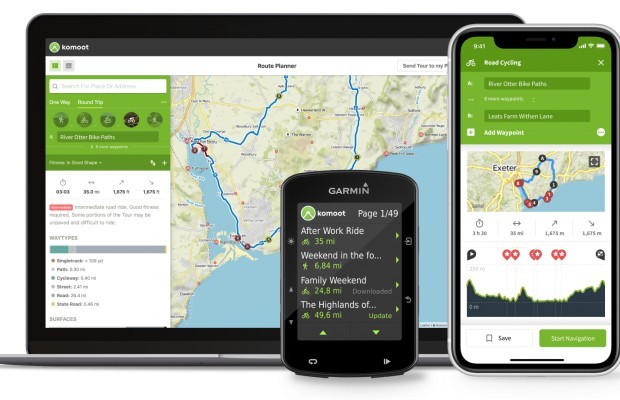
The best apps for cycling and mountain biking
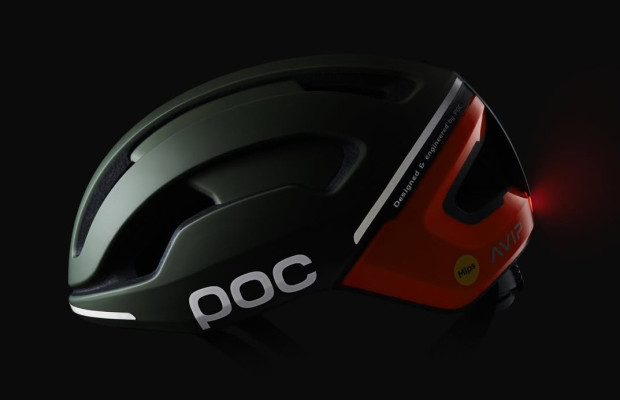
Black Friday 2025 cycling bargains: save on Garmin, POC, Maxxis and more
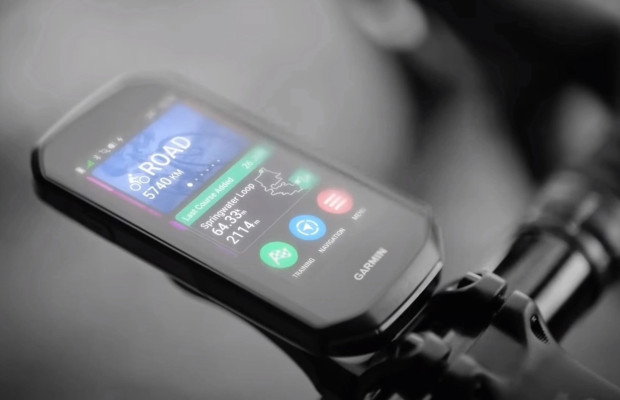
Black Friday Garmin 2025: the ultimate guide to choosing your GPS at the best price
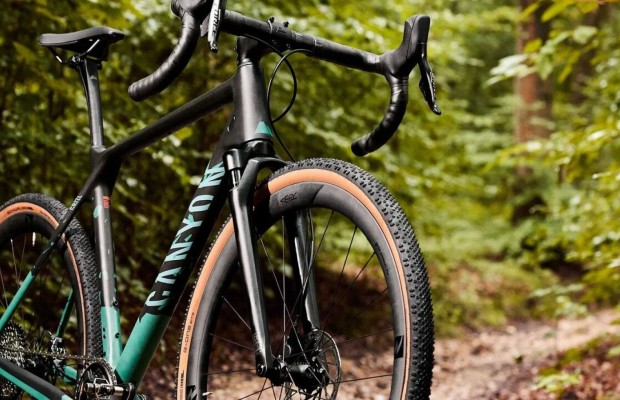
Do you need suspension on your gravel bike?
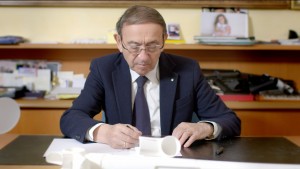
Just before that last triumph, this champion nicknamed the Lion of Flanders (because he also won there 3 times) met one day while training with Ernesto Colnago. This, born in 1932 into a family of farmers, had been working in a bike workshop since he was 13. They say he even had to lie on his documents to join at that age. Later, he had been a professional cyclist, a sprinter in love with the Milan-Sanremo. But a fall in a sprint at just 19 years old changed his life.
He took advantage of the situation to open his own workshop, in a 5-square-meter space in the town of Cambiago, on the outskirts of Milan, with a workbench made by his father. But, yes, he kept riding his bike. It was then that he met Magni, who mentioned feeling some discomfort in one leg. According to the foundational myth (all great companies must have one), when they stopped to drink from a fountain, Ernesto looked at the champion's bike, saw that the cranks were in poor condition and, with a trembling voice, offered to fix it.
"Mr. Magni, do you know why it hurts?", they say he told him under the suspicious gaze of the cyclist. "The cranks are bad, and since the pedal stroke is not round, it keeps hurting. If you want, I can fix it, but we would have to go to my workshop, which is nearby, in Cambiago." For some reason, Magni accepted the offer, they went there, and Ernesto started filing the cranks. After asking for his name, his new 'client' thanked him and got back on the bike. The next day, the team masseur showed up, offering him to work as a mechanic at the Giro d'Italia. And together... they won it.
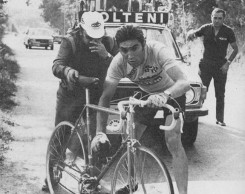
Eddy Merckx's right-hand man
Obviously, with those precedents, Magni kept him by his side for the rest of his career. By that time, in addition to being a cyclist, he was also the director of his team (yes, back then it was possible to be a player-coach), and soon he became the manager of various teams, where men like Gastone Nencini, winner of the 1957 Giro and the 1960 Tour, were part of.
And there was Ernesto, always as the trusted mechanic, adjusting the newly invented gears and pushing the bikes of the stars of the moment uphill. He even acted as a scout. Because, as the founder of the clover ace brand himself tells it, he was the one who discovered Gianni Motta at 16 years old, seeing him pedal on his way to the factory where he worked. Seven years later, he would win the Giro d'Italia.
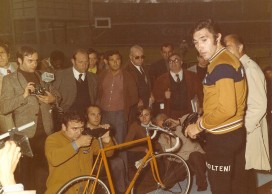
Meanwhile, like many mechanics of the time, Colnago was making its own bikes. In 1956, he even invented an innovative technique to cold bend forks, which made him quite famous in the cycling world. But his life took a turn in 1967, the year he met Eddy Merckx. Merckx asked him for a bike to compete with guarantees in his favorite race, the Milan-Sanremo. Ernesto made it for him, and the Cannibal won the Classicissima for the second time.
Thus began a relationship (to a certain extent clandestine, as many of those bikes did not bear the Colnago brand, but Eddy Merckx's own) of five years, culminating in the Hour Record of 1972. For him, Colnago created a masterpiece with details like beryllium hubs and titanium stem, weighing just 5.75 kg. That is, well below the UCI's current minimum weight of 6.8 kg. It is said that since then, Ernesto calls Eddy on the phone every October 25th, to remember together the anniversary of the feat.
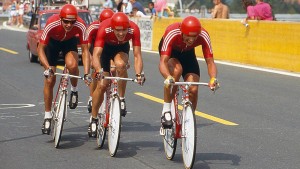
From Sanremo to Moscow
At that time, Colnago bikes seemed to have specialized in a race that had once enamored him as a rider: the Milan-Sanremo. The first to win there with one of his bikes was the Belgian Emile Daems, then came Merckx and, in 1970, Michele Dancelli.
In Italy, Sanremo is known as 'the city of flowers,' and that day a journalist said that, among all of them, Dancelli's bike looked "like another flower." Thus, the logo that would forever identify the brand was born: the clover ace (in Italian, 'asso di fiori'). By the way, their romance with the Riviera race would continue, first with Giuseppe Saronni in 1983 and later, three times in the 2000s with our great Óscar Freire.
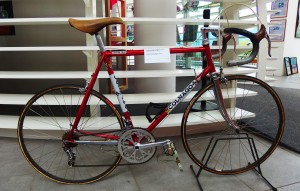
And in the 70s, Colnago went from being a village workshop to becoming a true industry. At the end of the decade, Ernesto even stopped going as a mechanic for teams to the Giro and the Tour, after 25 editions of each. He began sponsoring Italian teams and took under his wing a promising young man: Giuseppe Saronni. A man who would never leave him and who would shape Colnago's future to this day. But we'll get to that.
Because in 1980, one of the strangest and most unexpected collaborations in the history of bike manufacturers took place. In the midst of the Cold War, Ernesto Colnago 'jumped' the Iron Curtain and started working for the Soviet Union's cycling team. It turned out to be a great marketing move, as that year they won gold in the team time trial at the Moscow Olympics (where some Western countries boycotted). Later, they would win again in Seoul '88 with the German Democratic Republic (GDR).

Ferrari, carbon, Master... The era of innovation
The 80s were the years of innovation for Colnago. Especially, with an automobile manufacturer: none other than Ferrari. They began collaborating with the 'scuderia' in 1986, and from that relationship emerged a revolutionary and futuristic project, called 'Concept.'
Made of carbon (something very new at the time) and with techniques taken from Formula 1, this bike had a hydraulic brake system and a hub-based shifting system that resembled more a car lever. Although it was a prototype, as its name suggests, in 1989 it materialized in a model called C35 Ferrari.
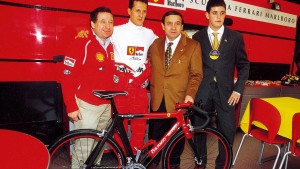
In the same years, two great leaps forward were made: the straight fork, in 1988 (before, all had a curve at the bottom), which provided greater comfort and better precision in turns; and the arrival of the Master model, still sold today, which was a true benchmark in the following years.
Thanks to the experience accumulated with carbon fiber, in 1995 they even managed to present the first bike made of this material that participated in the demanding Paris-Roubaix: the C40, a direct descendant of the C35 Ferrari. It was ridden by the Mapei cyclists, and not only that: one of them, Franco Ballerini, won that edition. And Ernesto usually tells that the night before, he received a call from the team's 'boss,' Giorgio Squinzi, asking him: "Are you sure this frame won't break on us tomorrow?" Not only did it not break that Sunday, but it won 5 of the next 6 Roubaix races.
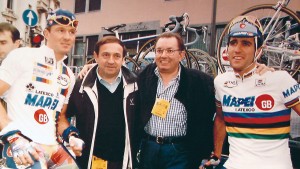
From Freire to Pogacar
By the 2000s, Colnago was primarily supplying two cycling teams: Óscar Freire's Rabobank and Lampre, where his 'pupil' Saronni was the manager. With the Spaniard came his best triumphs of the time, with 3 World Championships and 3 Milan-Sanremo victories aboard the new C50. Later, the C60 would come, and in 2018, the C64.
It was also the time for expansion into other cycling disciplines of a brand that had been almost exclusively focused on road cycling until then. Although in the 80s they had made cyclocross bikes, it was with Luca Bramati that they truly began to enter this specialty (today, they have the Prestige). An evolution that was completed in 2020, when they introduced their first gravel model, the G3-X, and the first electric gravel bike, the eGRV.
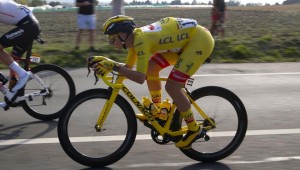
And finally, in 2019, the 'second Merckx' entered Colnago's life. In 2017, Saronni's Lampre had been renamed UAE Team Emirates, and that year they signed a promising Slovenian named Tadej Pogacar. Thanks to him, the Italian brand returned to the top, winning three Tours with their Colnago V3Rs and V4Rs.
However, since 2020, it is slightly less Italian, as that was when the Arab investment fund Chimera bought the majority of the company's shares. This does not mean that the coming years will be less exciting than the previous 70. And we must trust that Ernesto, who is in fantastic shape for having turned (you wouldn't say it) 93 years old, can see a few more victories of his bikes in the Tour, Giro, Roubaix, World Championship, and... above all, in his beloved Milan-Sanremo.